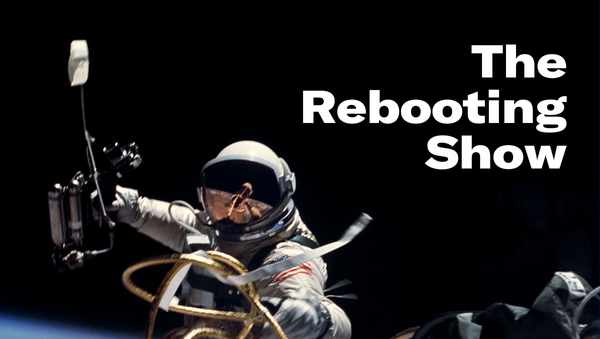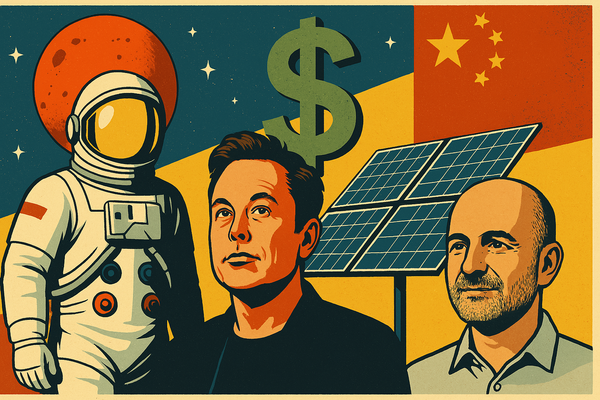Curating possibilities
On the ground reporting from the Possible conference
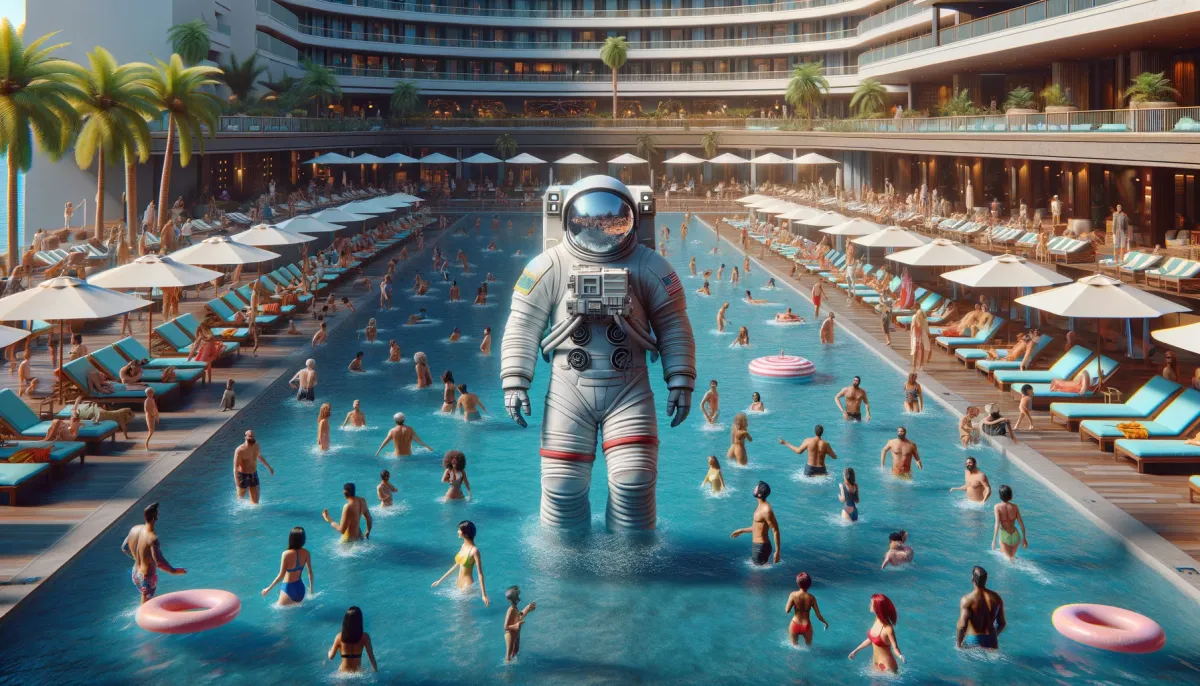
I’m going to be in London next week for a few days to speak at the PPA Festival on April 23. Let me know if you’ll be there. I have a few days free, so also let me know if you want to meet up. My email is bmorrissey@therebooting.com.
Speaking of events – it’s events season, like the fighting season – I have some thoughts below on Possible and a new episode of PvA. First, a message from EX.CO.

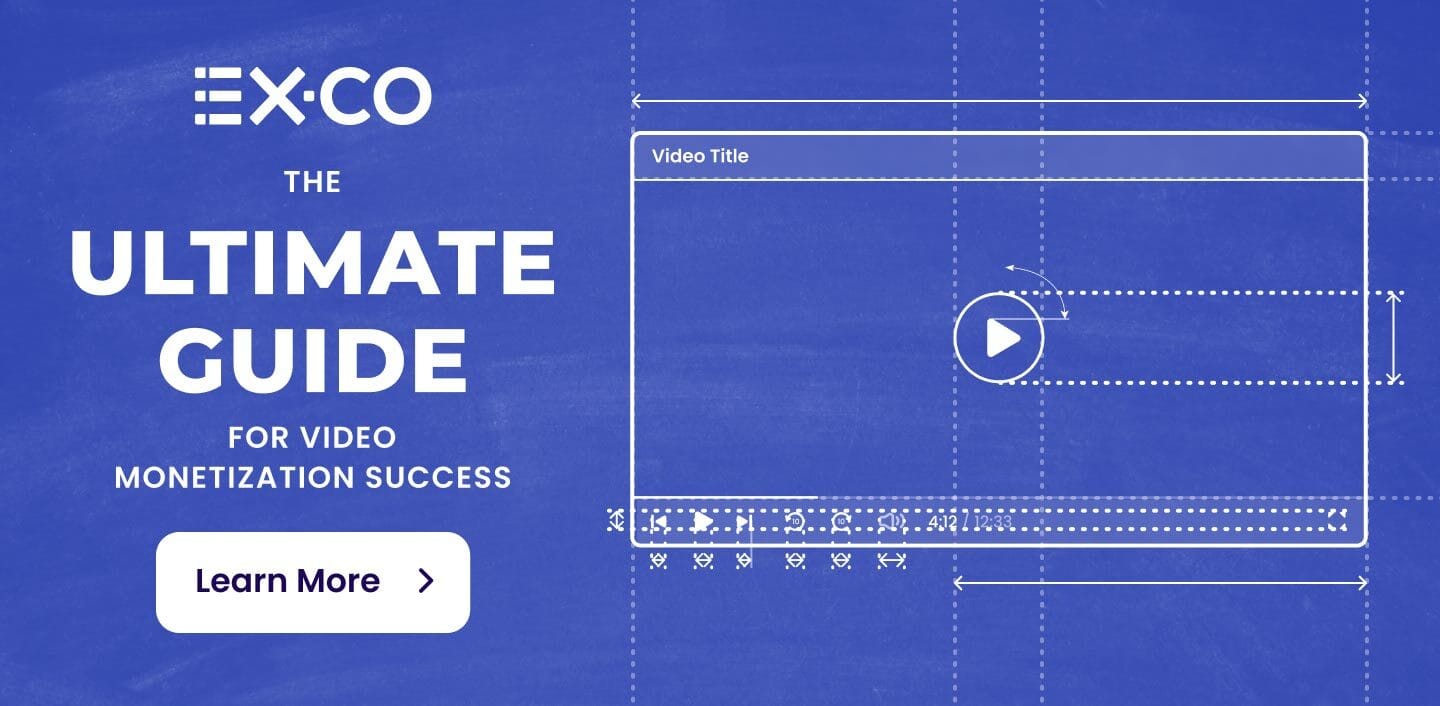
Designing a video monetization strategy can be overwhelming but the experts at EX.CO have put together this blueprint to simplify your path to video success. “The Publisher’s Blueprint to Achieving Successful Video Monetization at Scale” includes simple steps guaranteed to maximize your video monetization, including the necessary materials and techniques you’ll need to assemble your program and grow.
Whether you’re launching a new program from scratch, or looking to fine-tune and scale an existing one, this blueprint will optimize your video monetization while providing a best-in-class user experience.
AI is coming for advertising
On this week’s episode of People vs Algorithms, we tackled the question of what we want AI to do for us and what we don’t want to use it for. My takeaway: We’ll want to keep AI away from areas where we value human connection and taste. The latter is underrated. Taste and sensibility have long been essential to the media business, and I don’t see that changing. Troy doesn’t want a robot hopped up on AI giving him a massage; I’m open to the possibility because massages are awkward. One thing is for sure: AI is coming for a lot of the advertising industry. Check out the full episode on Apple, Spotify or other podcast platforms.
Curating possibilities
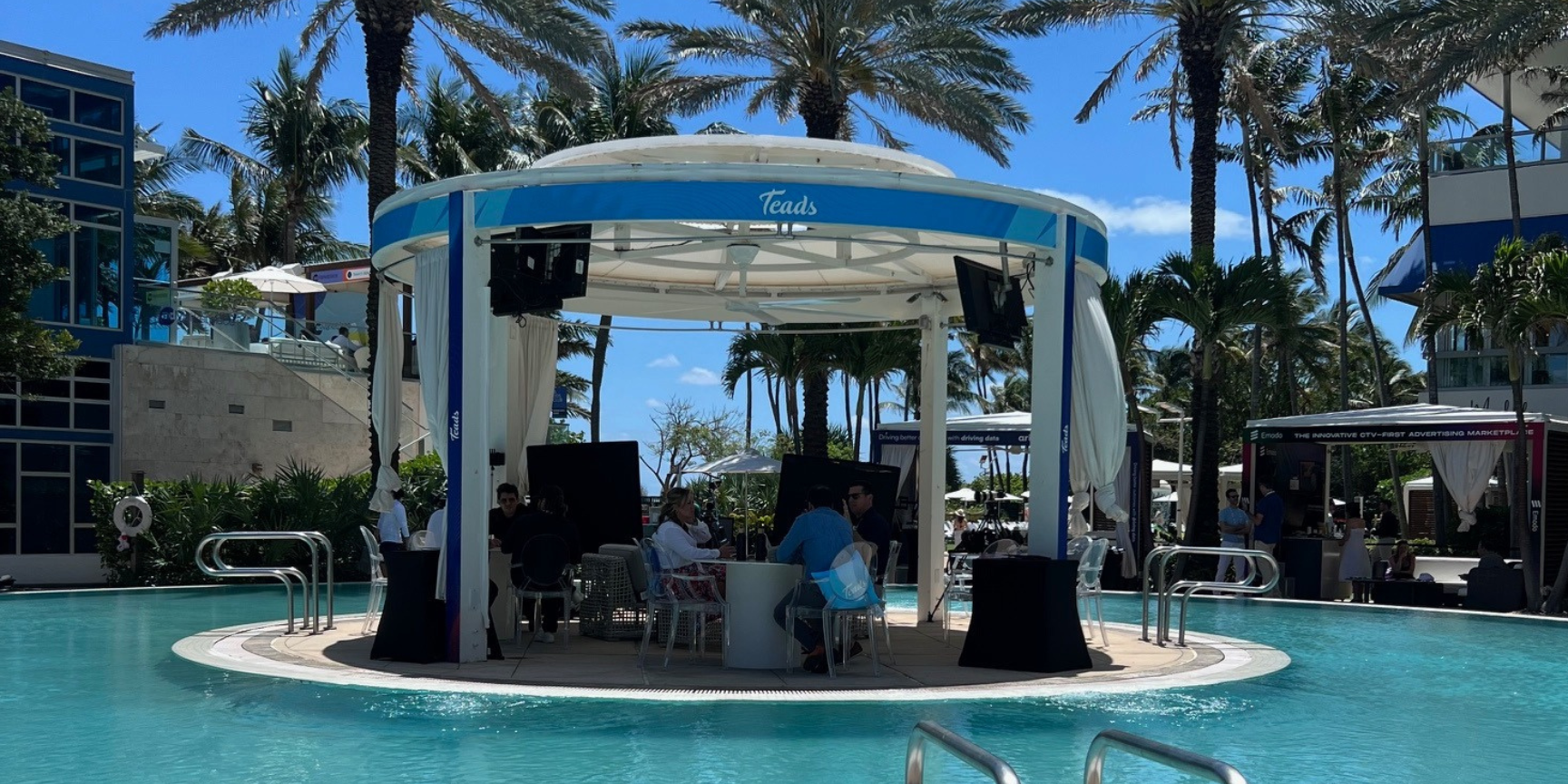
You know you’re at a tech conference when there’s a guy grinding out a Zoom in an absolutely heaving hotel ballroom. Admire the hustle.
Possible is making a credible bid to be yet another industry tentpole event. It drew 3,000 attendees to Miami Beach in its second year and is well positioned to be a mini-Cannes or pre-Cannes; call it an amuse-bouche. It won’t replace Cannes, at least not anytime soon, but it will chip away by offering a more efficient alternative for U.S. companies in the media ecosystem. In media and marketing, everyone lies, and a common one is that you need to sashay down the Croisette in a fedora to have a meeting with someone who lives and works in the same city.
Possible is headed by the very dapper Christian Muche, who for years was the front man for Dmexco, a European ad tech event that operated on the periphery to the industry tentpoles, jockeying with events like Mobile World Congress as something less than must attends for most companies. Dmexco is known for being mistaken as D-Mexico and for its massive “stands,” which verge on temporary buildings in a cavernous convention space. It’s also in Cologne. I never went.
The heart of these kinds of events are not in the overly air conditioned dark conference ballrooms with those garish carpets every hotel uses to cover all the stains. It’s outside among the archipelago of pools that Possible dotted with cabanas for ad and martech companies to hold meetings and happy hours. There’s more action at La Côte, the bustling bar where I was told for the millionth time by a tech sales guy, “It’s all about relationships,” as he ordered another mojito.
These events often have the feel of reunions because there is a recurring cast of characters that sustain them. Walking through the garish grounds of the Fontainebleau and you’ll run into the this world’s version of Frank, Sammy and Dean. I’m talking about Terry Kawaja, Matt Barash and Lou Paskalis. And Michael Kassan too. I ran into him in the lobby of the Soho House down the beach. We were both wearing white pants. I joked with him about being “on the lam.” He chuckled.
Michael is undaunted and will resume his role as the unofficial mayor of Cannes and connecter. I’m reminded that we are post-cancel culture. The move now is to muscle your way through any controversy, big and small. Besides, most people know it’s just business and disputes over money tend to get messy. It is what it is, all good.
There’s a time and place for moralizing, it absolutely is not when the sun is out at the Fontainebleau as as tech salesman in blazers and jeans are interspersed with mostly naked sunbathers who must be bewildered and livid to be dropped in the middle of an ad/martech conference.
Imagine the unsuspecting tourist who suddenly is confronted with marketing about “curating possibilities,” and “driving performance with driver data.” One company just went with “Future. Forward.” GumGum had the most impressive setup, while the Teads meeting area in the middle of a pool. (There’s a causeway in the back to get there without getting wet.) There were AdMedia-branded white fedoras at the closing party.
The best part of running one of these events is the attendees can scarcely complain about too much marketing from dozens of sponsors. I don't know how companies measure the ROI of plastering their logo on lunch tables. At the Spaceback table, I ate a couple bites of a ham and cheese sandwich that had a risky amount of aioli after sitting out in the Miami sun for over an hour. Attain went for the lanyard sponsorship, an old standby, but one ad tech CEO told me they travel with their own lanyards in case the sponsor is a competitor.
The marketers are the main attraction. They're the product. This is the norm since marketers control ad spending budgets so they can just say a few platitudes to “purposes” and “innovation” and get a gushing response. They might have notoriously short tenures and a tenuous reputation with the CFO, but in these settings, they are the real celebrities, sorry Pitbull. They were also a rare sighting. You had a 15x greater chance at seeing a data platform sales person as you did a marketer. Maybe they were cordoned off in a Miami version of the Red Keep that’s only available to those with “VIP” badges, which ranks above “Premium.”
Like most conferences, Possible is about sales. The efficiency argument is you can do the equivalent of 30 meetings in a few days and innumerable “drivebys” in a few days. It’s not uncommon to speak to someone with a rasp from endless shouting over loud music. There’s a lot of truth to this kind of argument for these ecosystem events. They actually make more sense in the ragged, uneven nature of modern laptop work that isn’t as anchored to offices. And in my adventures in B2B sales, face-to-face interaction is valued far higher than any other marketing. If you're just selling ads, you're doing it wrong.
The programming is necessary but insufficient. Nobody is buying the VIP pass bc of the Lisa Leslie session, which I estimated to have a quarter of seats fileld. It does serve a role in luring brand marketers and celebrities with stage time. Then you complement that with a “hosted buyer program” that incentivizes sales meetings. I spent nearly a decade in this hustle, standing on stages in Key Biscayne doing sessions to half empty rooms while the poolside bar was filled. I didn’t take it personally. The business is driven by matchmaking a buy and a sell side.
The mistake many publishers make with industry events is organizing them as exercises in “live journalism.” That’s not where the money is. That might be why Possible wasn’t created by an industry publication. Adweek could have made Brandweek this – it was also held in the same hotel – but Possible now has the momentum.
Miami is a great place for an event like this. Cannes is too far, too expensive and too French. The more with less era makes this play perfectly timed. A flight to Miami is $300. If you don’t stay at the Fontainebleau or next door at Eden Roc or Nobu, there’s always the legacy serviceable Hilton for about $150 a night. It lacks a harbor of yachts nearby, but there are party boats. I went on a sunset cruise with PR software company Muck Rack around the mostly empty mansions belonging to DJ Khaled, Madonna and more. Barry Diller just bought a waterfront lot on North Bay Road for $45 million. He didn't even get a house with it.
Waiting for the 63rd St bridge on Indian River to open, a dinghy approached with a floating keychain and business card for bottom cleaning (boats). Good marketing sometimes doesn’t need a ton of data, no matter what the cabana crowd wants everyone to believe.
Cannes is due a competitor. It was to years ago none other than Martin Sorrell declared it “too brash.” He must have looked at the T&E bills from all the people WPP sent. Then again, the Fontainebleau isn’t shy of charging $34 for a poolside drink. And Miami doesn’t do understated well.
Possible will join the cavalcade of ecosystem tentpole events. These are deemed as the must-stops on a crowded events calendar that makes you wonder if some people spend the majority of their waking hours wearing a lanyard. There should be some kind of award for doing CES, IABALM, ANA, Possible, Cannes, Advertising Week. I spoke to one person who took the red eye from Vegas at the NAB to squeeze in a drive by at Possible. That’s like when Phil Collins played both Live Aid in Philadelphia and London on the same day by taking the Concorde. Below the tentpoles are a vast array of vertical events. There is an irony to all these software companies relying so heavily on the most analog of all marketing channels: the cocktail party.
Cannes will do just fine. Geography and demography are the destiny of nations, but it’s mostly geography for events. I have utmost faith in the human capacity to rationalize the critical business needs of decamping to the French Riviera in summer. The CFOs do not stand a chance against motivated human ingenuity.
Thanks for reading. Consider taking out a membership to The Rebooting for full access to all content, virutal and in-person events and more.


